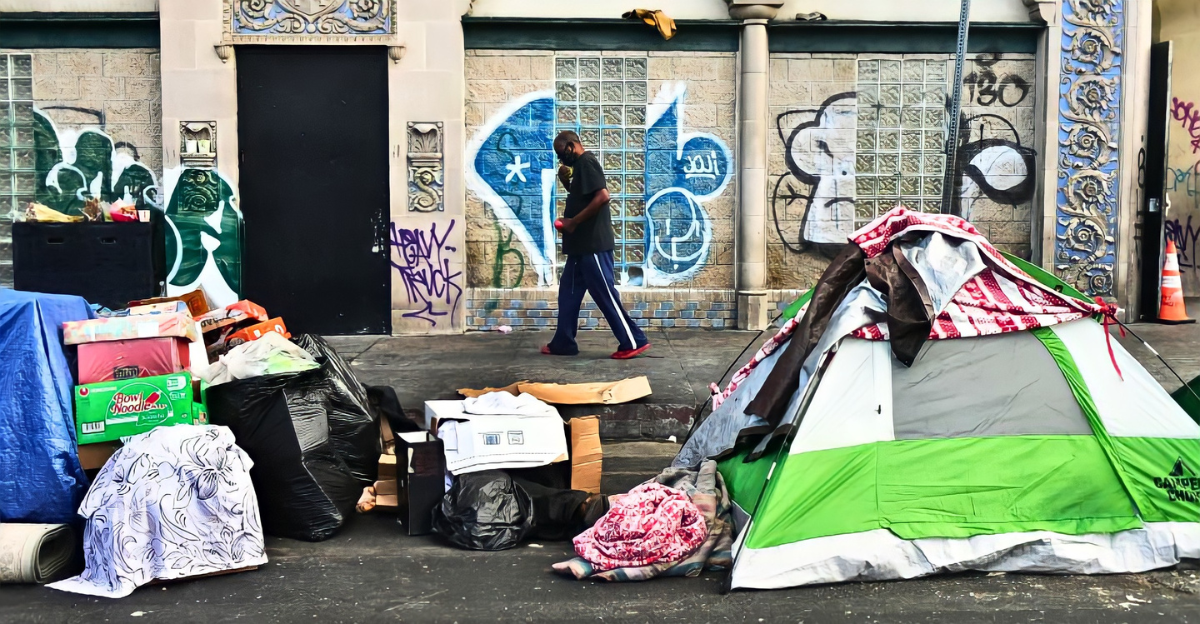
In January 2024, America’s homeless population hit an all-time high of 771,000 people, an 18% jump from just one year earlier. California leads the nation, with more than 187,000 people unhoused. Experts say these numbers reflect the growing housing affordability crisis, where millions of Americans face skyrocketing rents and limited affordable housing options.
Both sheltered (in temporary housing) and unsheltered (living outdoors or in vehicles) people are included, showing this is not just a big-city issue but a sweeping national one. These are some of the leading states when it comes to homelessness.
Colorado

Colorado’s homeless population reached an all-time high in 2025, with the Denver metro area seeing over 7,300 individuals experiencing homelessness, a 12% increase from the previous year. “Homelessness is a housing problem, and we are committed to driving policies that increase access to safe, sanitary, affordable housing and resources that help people meet basic needs,” said Cathy Alderman, Chief Communications and Public Policy Officer at the Colorado Coalition for the Homeless.
Advocates and researchers agree that while housing costs, job instability, and stagnant wages drive homelessness, visible encampments and rising family homelessness signal that solutions must address systemic affordability and rapid rehousing.
Arizona
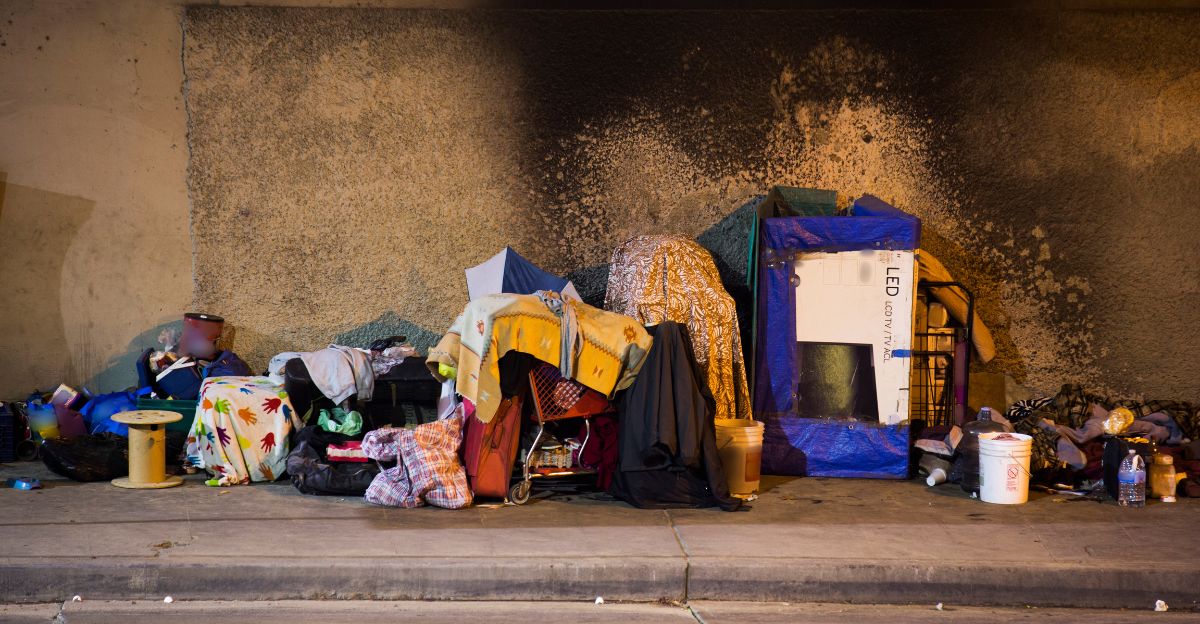
Maricopa County alone counts 9,734 homeless individuals, a 3% increase over last year, while the unsheltered population spiked 28% as shelter funding evaporated. Regional homelessness program manager Brian Gruters said that “pandemic-era federal funding had boosted shelter capacity” but with recent funding cuts “this year that reversed.”
High housing costs and record evictions are pushing more residents into homelessness. Community efforts, such as expanded affordable housing initiatives in Tempe and Phoenix, show hope, but analysts caution, “the stakes, human lives and social stability, make further delay costly and dangerous”.
Ohio
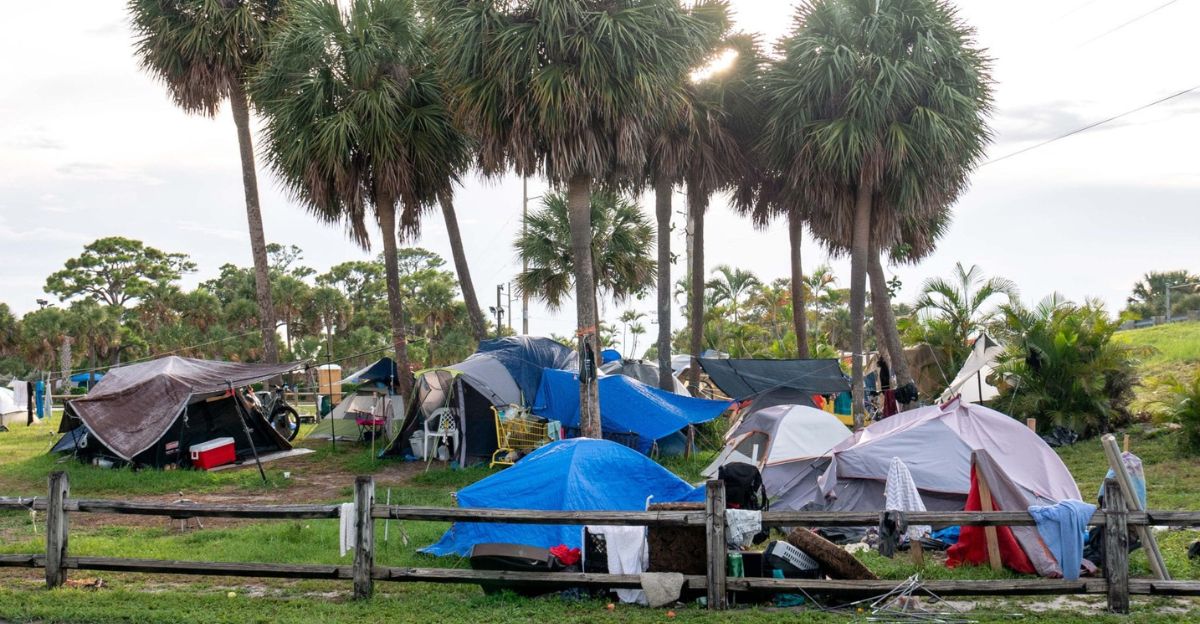
Ohio reported 11,759 people experiencing homelessness in 2025, which amounts to about 4.4% of the state’s extremely low-income households and marks only a 3% increase from the previous year, well below the national surge of 18%. Local experts say “Rent inflation in Ohio has been worse than much of the country lately, but the cost of living here is still relatively low compared to coastal states where homelessness is exploding,” according to a release by the Coalition on Homelessness and Housing in Ohio (COHHIO).
Despite ongoing headwinds, COHHIO Executive Director Amy Riegel credits state budget reforms and targeted housing programs for “having a positive impact, even as pandemic-era assistance expired and rents continued rising.
Georgia

Recent reports show over 12,000 people experiencing homelessness across the state in 2025, many concentrated in Atlanta, where more than 4,000 individuals regularly receive housing services. Local leaders and advocates identify affordable housing shortages as the leading cause, a crisis further exacerbated by inflation, mental health struggles, and the lingering impact of COVID-19.
“Until we get a hold of our affordable housing crisis in Atlanta, the parallel homelessness crisis will persist,” said Cathryn Vassell, CEO of Partners for HOME. For every person successfully rehoused in Atlanta, 2.5 more become homeless.
New Jersey

New Jersey’s homeless population surged to 13,748 people in early 2025, the highest count in more than a decade. This reflects an 8.4% year-over-year increase driven by rising rents, shortages of affordable homes, and economic instability. Housing advocates and local experts echo this alarm, linking the uptick to sharply increased demand for emergency shelters, a 15% rise in unsheltered people, and persistent barriers for low-income New Jerseyans to access permanent housing.
Assemblywoman Yvonne Lopez remarked during recent legislative hearings, “Our communities are hurting—high rents and limited supply mean that thousands risk homelessness each month, and the response must be bold and immediate.”
Pennsylvania
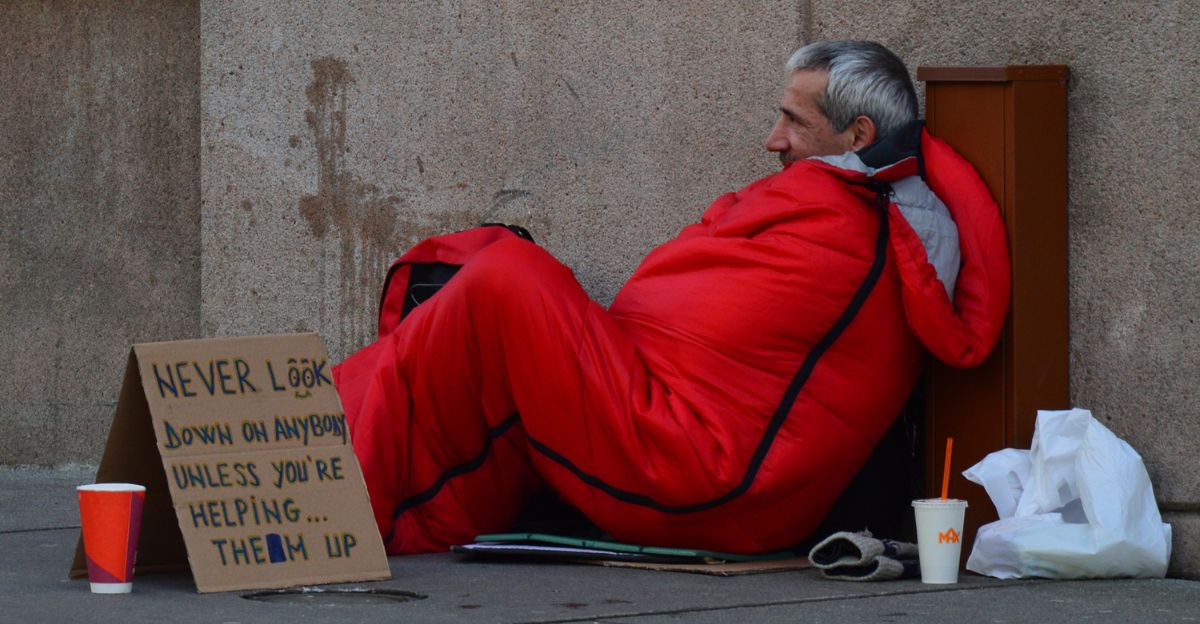
Pennsylvania’s homeless population remains a significant challenge, with estimates showing over 14,000 individuals experiencing homelessness in 2025, accounting for roughly 2.3% of the national total. Recent statistics from the Pennsylvania Department of Housing and Urban Development reveal that 86% of the state’s homeless are classified as “sheltered,” living in temporary or transitional housing programs, but advocates caution this may undercount unhoused individuals sleeping in vehicles or makeshift encampments.
In Philadelphia, city officials reported an alarming 38% increase in unsheltered homelessness, with emergency shelter director Michael Hinson stating, “Our staff see new faces every week, families, working adults, and seniors hit by rising rents and unexpected crises”. Despite ongoing efforts by the Pennsylvania Housing Finance Agency to fund affordable housing, demand continues to exceed supply, leaving thousands at risk and driving a complex, ongoing crisis.
Oregon
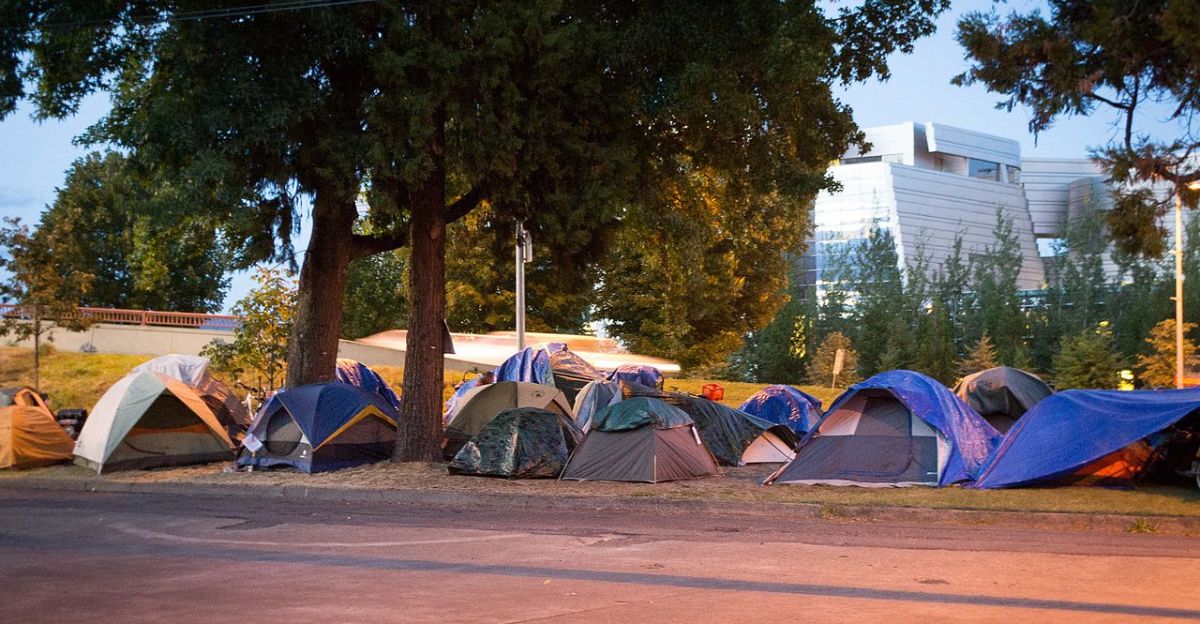
Oregon’s homelessness crisis continues to escalate, with recent data showing over 22,000 people experiencing homelessness statewide and 54 per 10,000 people. In Portland alone, the number of unhoused people increased by 29% in just one year. Experts attribute the surge to a dramatic mismatch between income levels and soaring rents, which have climbed 40% since 2021.
John Tapogna, President of ECONorthwest, said, “Communities across the state are experiencing dramatic impacts of homelessness. In Jackson County, the homeless population hit a seven-year high. In Central Oregon, the number of adults living on the streets, under bridges, or in cars increased by 25.8% in 2017 – 2018. Conditions faced by Lane County’s growing unsheltered homeless population triggered the threat of a lawsuit”.
Illinois
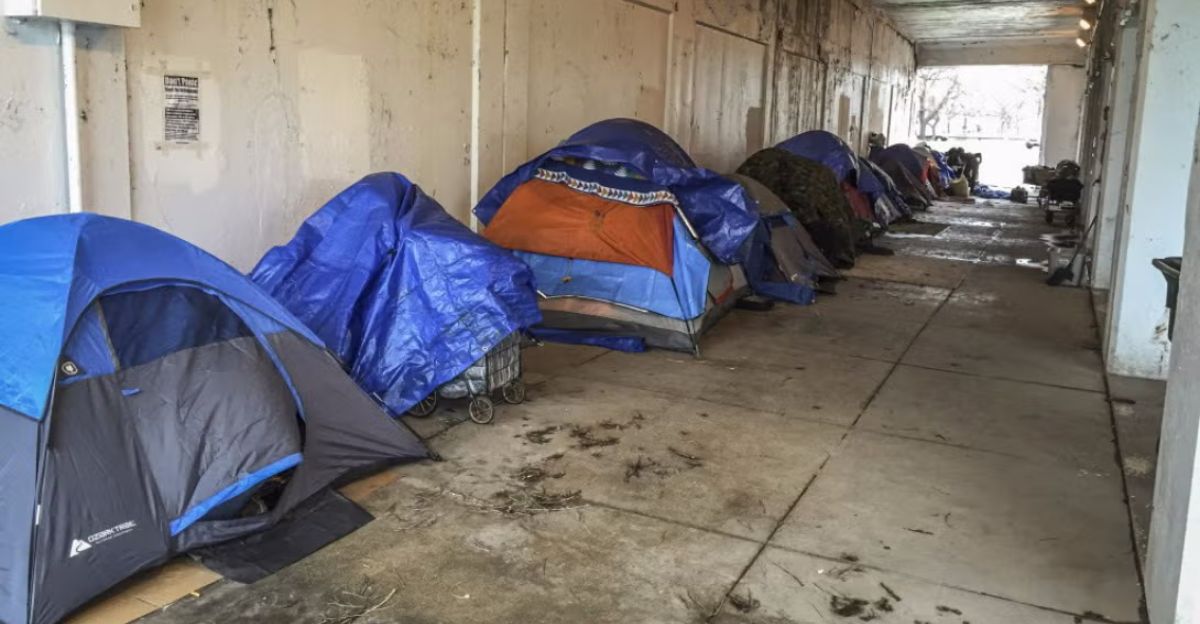
Illinois has witnessed a dramatic rise in homelessness, with the 2024 Point-in-Time count showing 25,806 people experiencing homelessness on a single night, a staggering 216% increase over the previous year. Chicago alone reported a threefold surge, from about 6,100 people in 2023 to nearly 18,800 in 2024.
“Last year, homelessness increased 116% in the state of Illinois. To be in the midst of this crisis and then have the state cut funding was beyond disappointing,” said Doug Kenshol, co-founder of the Illinois Shelter Alliance. Despite state initiatives like the Home Illinois plan and budget increases for homelessness services, demand outpaces support, leading advocates to warn that a lack of funding for affordable permanent housing leaves people stuck in the shelter system.
Texas

With more than 27,000 residents lacking permanent shelter as of early 2024, a more than 12% jump in the past year, Texas is in line with national trends. “We’re in a huge affordability crisis,” explained Eric Samuels, president and CEO of Texas Homeless Network. “There are a lot of people out there at risk of homelessness. And if they fall into homelessness, we have a lot fewer units to help them escape homelessness.”
Rising rents, the expiration of pandemic-era safety nets, and insufficient affordable housing have all contributed to this spike. Still, Texas cities like Houston and Dallas have pioneered rapid-rehousing initiatives, placing thousands into new homes.
Massachusetts
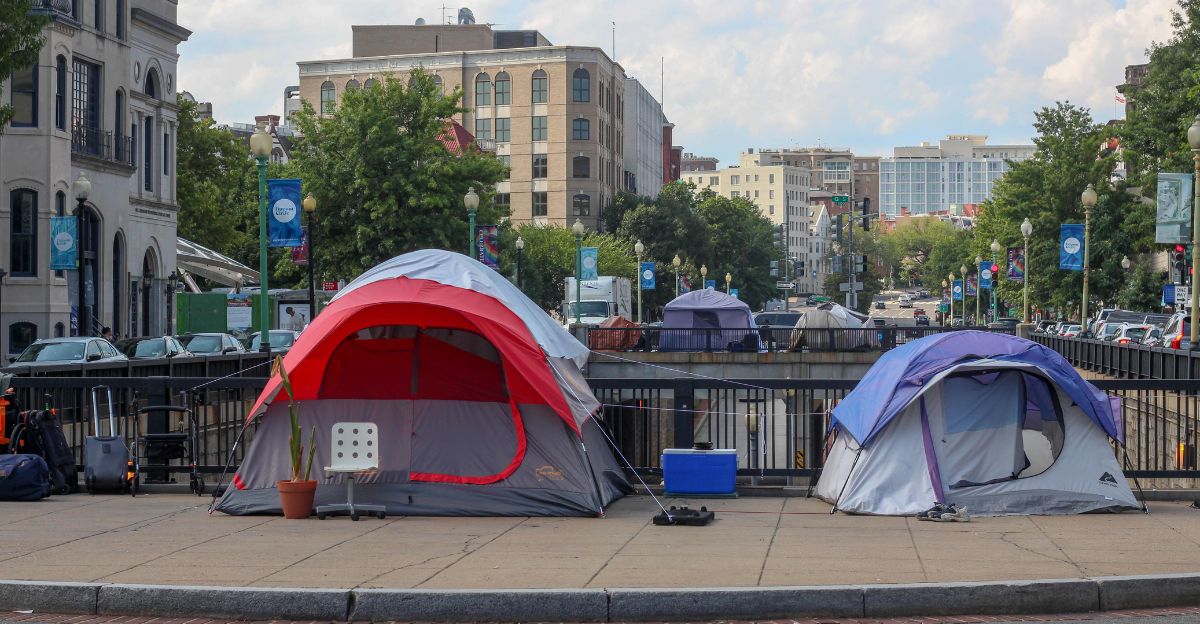
With over 28,000 adults and children documented in the January 2025 Point-in-Time count, nearly double the number recorded in 2022. Leah Bradley, CEO of the Central Massachusetts Housing Alliance, emphasizes, “We’re going to continue to see homelessness go up until we start to think about how do we increase the supply of housing?”. Once praised for its right-to-shelter law, the state’s shelter system has recently operated at or below capacity for more than a year, forcing officials to reduce shelter spots and introduce time limits for families.
Professor Thomas Byrne of Boston University said, “Providing housing for older adults not only aligns with societal values but also makes financial sense,” while advocating for a substantial expansion of federal support programs.
Florida
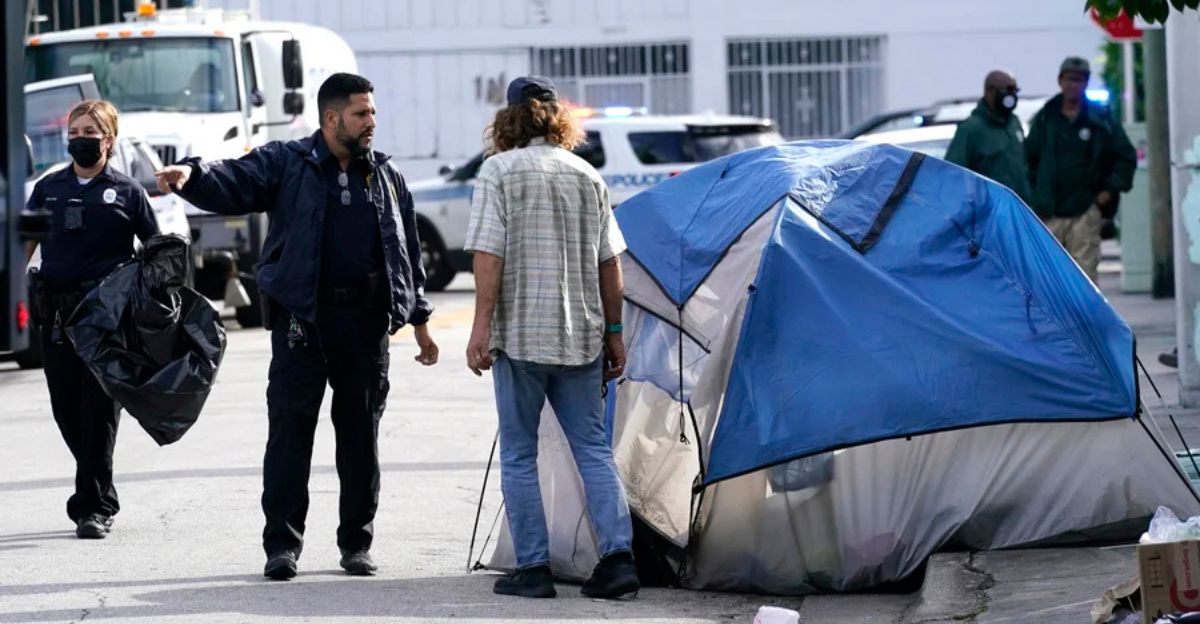
Florida’s homeless population in 2025 was estimated at 28,498, representing a 9% decrease from the previous year, but families and individuals continue to face severe hardship amid rising housing costs. According to expert Anne Ray of the University of Florida’s Shimberg Center, “Florida’s strong population growth has collided with limited housing supply, pushing rents beyond what many families can afford,” this pressure has resulted in a 28% increase in family homelessness over three years.
This situation disproportionately affects working families, with Nesbitt explaining, “Many of the folks experiencing that instability are part of our workforce. Most of the folks that this report calls out, these are folks that are working jobs and working many of the jobs that power our state’s economy”.
Washington
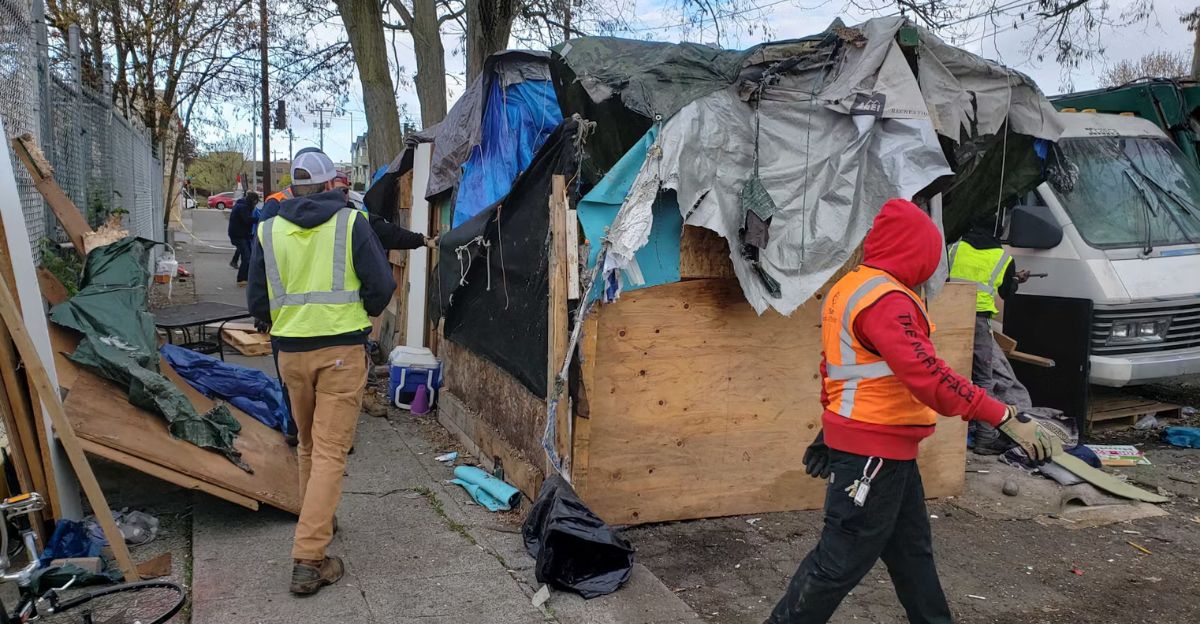
Washington continues to grapple with rising homelessness despite historic investments, recording more than 22,000 people on a single night and nearly 159,000 total across 2025, a 25% jump since 2022. State Department of Commerce Director Joe Nguyễn acknowledged, “Too many people in our communities don’t know where they’re going to sleep at night, or if they’ll be safe when they try to rest,” and called for even stronger action as the legislature earmarked $1.8 billion for housing programs in 2025–27.
Washington has the nation’s highest share of chronically homeless individuals, 49% in 2024, driven by high local housing prices and increasing outreach to those living in encampments.
New York

New York’s homeless population has surged dramatically in recent years, doubling between January 2022 and January 2024, according to official data. In 2024, the state counted over 158,000 homeless individuals, about one in five of all unhoused people across the U.S.. Comptroller Thomas DiNapoli said, “New York has long had a housing affordability crisis, and more families are running out of options and ending up on the street or in shelters.”
Nearly one-third of New York’s homeless are children, one of the highest proportions nationwide, and the city’s unique shelter mandate has resulted in the lowest rate of unsheltered homelessness at just 3.6%. The ongoing influx of asylum seekers, rising rents, and continued resource shortages reinforce the need for expanded housing investments and better support across all communities.
California
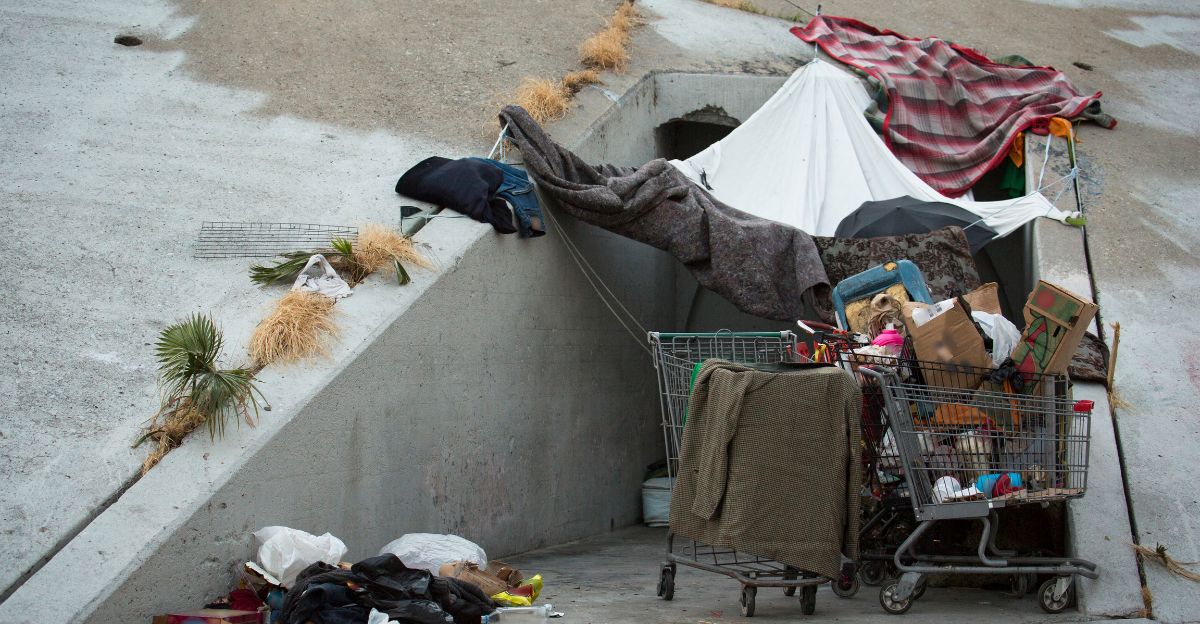
California has the highest number of homeless people in the nation, with a reported 187,000 individuals experiencing homelessness as of January 2024. Governor Gavin Newsom said, “People are dying on their watch. How do people get reelected? Look at these encampments. They’re a disgrace. They’ve been there years and years and years”. Despite investing more than $20 billion in housing and related services, Newsom has urged cities and counties to step up their response.
Health and homelessness advocates caution that such crackdowns may not address an enormous affordable housing shortage. “The single biggest driver is affordable housing scarcity,” notes analyst Erica Reeves, reflecting the broad expert consensus that rising costs drive California’s exceptionally high homelessness rates.
No State Is Spared
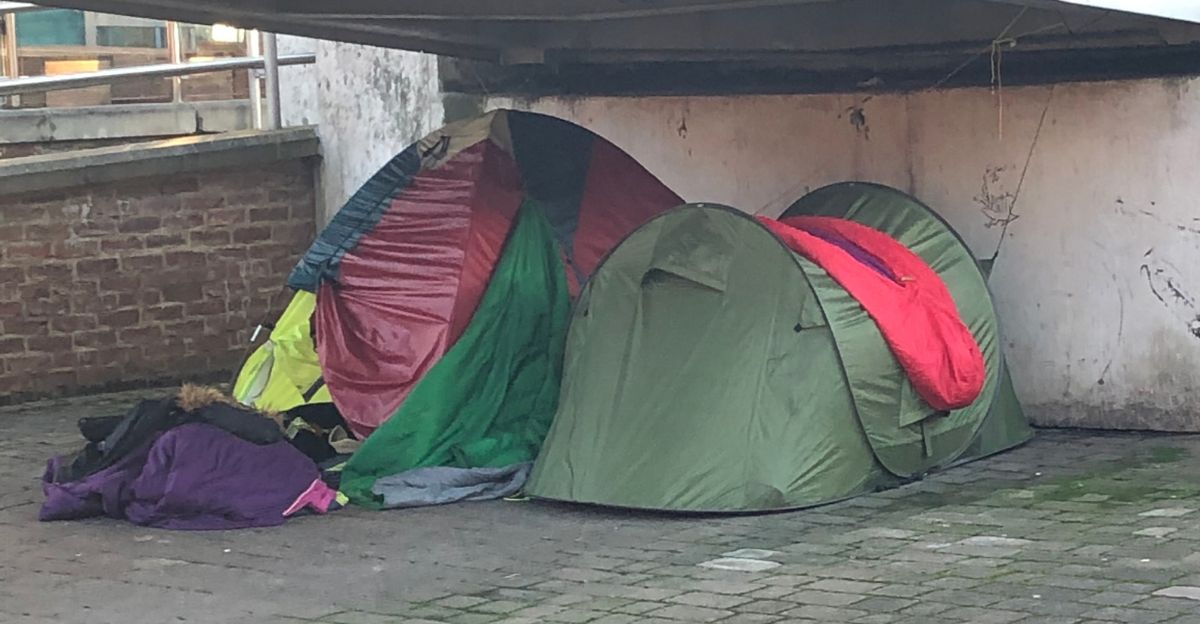
Homelessness is often seen as a big coastal city issue, but the reality is far broader. A staggering seven states, California, New York, Florida, Texas, Illinois, Massachusetts, and Washington, make up 64% of all homelessness nationwide. California is the epicenter, but every one of these states is carrying a heavy share. While big urban areas struggle with visible tent cities, smaller and rural states like Vermont also show unexpectedly high per-capita homelessness rates.
Local shelters simply don’t have the staff, beds, or resources to keep up, leaving thousands without options. Communities big and small are coming up short, despite their best efforts.
How We Count the Unseen

The Department of Housing and Urban Development (HUD) runs an annual count of the homeless population, known as the “point-in-time” count. This survey takes place on a single night in January, aiming to capture everyone who is living in shelters or on the streets. While it is the best nationwide data available, many experts argue it falls short. People living in cars, moving between friends’ houses, or hiding in rural areas often go uncounted.
This means the official 771,000 number could be underestimated. Advocacy groups argue for better data tools and more frequent surveys to truly understand the crisis. “Our counts are snapshots in the dark. We’re only ever catching shadows of the bigger reality.”
Real People, Real Stories
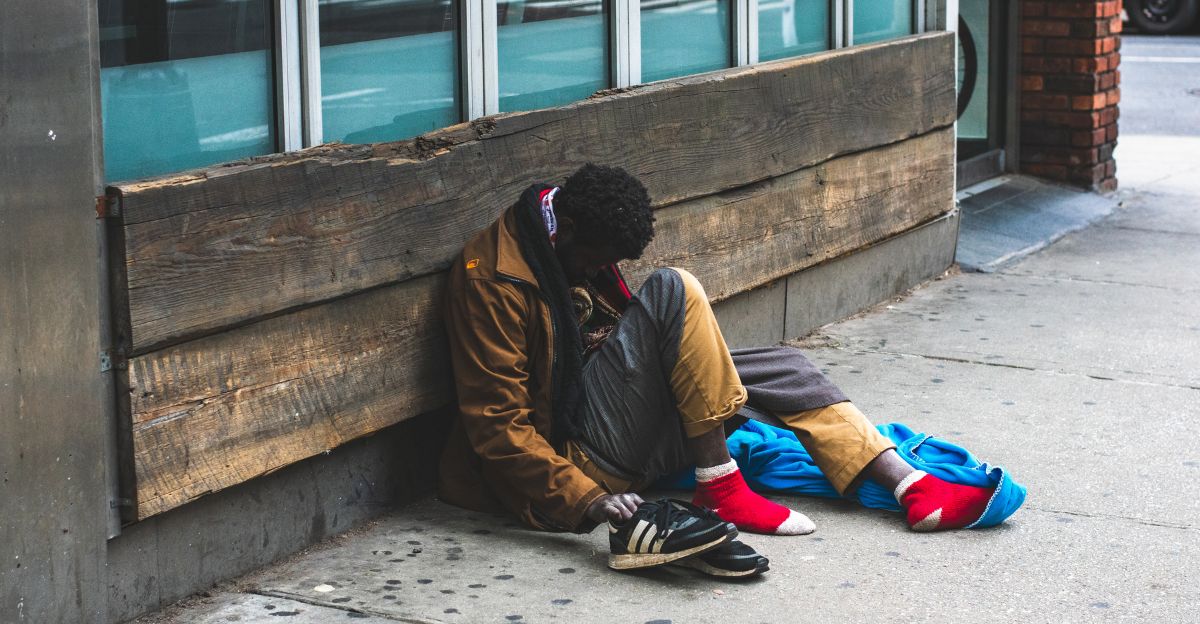
If you visit Los Angeles, Seattle, or San Francisco, you’ll see tent cities and clusters of makeshift shelters lining sidewalks and parks. They’re visible symbols that the problem isn’t going away soon. On the other side of the country, places like New York have a different approach. About 96% of New York’s homeless population spends time in shelters or temporary housing, mostly thanks to winter weather and a “right to shelter” policy.
The faces of homelessness cover families with young kids, war veterans, teens, and working adults. A shelter resident named Jasmine said, “Losing affordable housing was the last straw. After that, we had nowhere else to go.”
What the Experts Say

Housing experts insist homelessness is not just a city problem. HUD analysts found that rent matters most, as states with the highest rents also have the highest homelessness rates. Low incomes, weak social safety nets, and policies that exclude some people all make things worse.
Erica Reeves, a policy analyst, says, “The single biggest driver is affordable housing scarcity.” Not enough cheap places to live means people end up on the streets, in shelters, or crowding with friends and family.
More People Sleeping Outside

In Western states like California, Nevada, and Hawaii, almost two out of every three homeless people sleep outside or in places not meant for living. Cities sometimes set up official encampments as a controversial way to help, while other places clear camps or try stricter approaches. In the Northeast, states like New York and Massachusetts mostly rely on emergency or transitional housing, helping most people avoid living outdoors.
The debate over best practices is ongoing. But one thing’s clear, unsheltered homelessness is now the majority in more places than ever before. “We’re seeing encampments become the new shelter for thousands, a sign of bigger problems in housing and policy,” shares Brian Daugherty of a regional council.